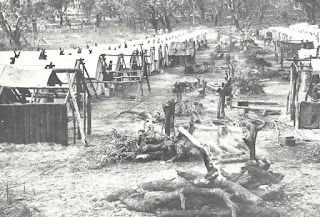 |
| Arms of Hotspur |
Henry Percy, Lord Percy also known as Hotspur was the son of Henry 1st Earl Northumberland and Margaret De Neville, he was born 20th May1364 at Alnwick Castle Northumberland England. He married Elizabeth De Mortimer daughter to Edmund De Mortimer 3rd Earl March and Philippa Plantagenet Countess of Ulster.
Henry and Elizabeth had two children:
Henry Percy, 3rd February 1393 - 22nd May 1455.
Elizabeth Percy, c.1395 - 26th October 1496.
The Percy family were a powerful family in Northern England during much of the Middle Ages, the family had gained the title Baron Percy before the 1066 conquest. The family name Percy is derived from the Norman village Percy En Auge , the ancestral home of the Percy family before 1066.
I discovered Henry Hotspurs back in 2008 - 09, and my ancestral connection is; he is my 18th Great grandfather.
Henry is an ancestor who gives up an extraordinary amount of historical information of himself, and his family history. Seconded only by the House of Plantagenet the House of Percy has given me years of researching pleasure.
In the year 1377 Henry Hotspur was knighted by King Edward III alongside the future King Richard II and Future King Henry IV. He was in Ireland in the year 1388 with Edmund De Mortimer 3rd Earl of March, 1338 saw him travelling to Prussia and was appointed Warden of the East March 1384 - 1385.
He accompanied King Richard II to the Scottish boarders in 1385 and because of his speed and willingness to attack the Scots gave him the name Hattspore (Hotspur). In 1386 he travelled to France and reinforced the garrison at Calais were he led raids into Picardy.
He was in command of Naval forces August to September 1387 were he attempted to relieve the siege at Breast. He was made Knight of the Garter 1388 at the age of 24 in appreciation of his military abilities.
Percy commanded the English military forces against James Douglas at the Battle of Otterburn 10th August 1388, were he was captured and ransomed for 7000 marks. Henry Hotspurs reputation continues to grow in years to follow and he is sent as a Diplomat to Cyprus, June 1393. Appointed Lieutenant of the Duchy of Aquitaine 1394 - 98 on behalf of John of Gaunt. Returning to England January 1395 he accompanied Richard II in his expedition to Ireland, returned to Aquitaine in the autumn and was in Calais in the Summer of 1396.
Percy earned substantial Royal favour for his military and diplomatic service, the Percy family gave its support to the feature King Henry IV in his rebellion against King Richard II. When Henry returned from Exile in June 1399 Percy and his father joined Henry and his forces at Doncaster and marched south to depose King Richard II. The Percys were rewarded with lands and titles from Henry IV.
Under the new King Henry IV Percy had both civil and military responsibilities to the east of march and towards Wales and also to the north and Scotland. He was appointed High Sheriff of Flintshire, 1399.
In 1402 Percy was appointed Royal Lieutenant in Wales by Henry IV, on the 14th September Percy, his father and the 3rd Earl of March defeated a Scottish force at The Battle of Homildon Hill.
The Percy family became disgruntled with Henry IV decisions over the next months and the family moved closer to rebellion. Among other grievances the Percys could not except the Kings failure to pay them for their defending the Scottish boarder and the Kings failure to ransom Henrys brother-in-law, Edmund Mortimer after his capture by the Welsh, June 1402.
 |
| Pedigree of the Percy Family |
In the summer of the year 1402 the Percy family had had all they could take from the King and they took up arms against Henry IV in rebellion to his decisions in past months. Apparently Henry Percy had issued proclamation accusing the King of running a tyrannical government.
Percy was joined by his uncle Thomas Percy Earl of Worcester and his father Henry1st Earl Northumberland and together they marched to Shrewsbury were they intended to engage the army there under the command of the Prince of Wales, feature King Henry V.
 |
| Death of Henry Hotspurs Percy |
Henry and his uncle arrived at Shrewsbury with their armies 21st July 1403, without the support of his fathers army as his father was moving south toward Shrewsbury at a slower pace.
On their arrival they encountered the King with a large army, Henry and Thomas engaged the Kings army, and the ensuing bloody and fierce Battle of Shrewsbury was underway.
The battle was the first were English Archers engaged against the other on English soil, reaffirming the effectiveness of the English Longbow, in the most gruesome of ways, cutting men down in both armies. The battle ended Henrys challenge to King Henry IV, he paid the price of his dis - content with the King through his own death; on that battle field at the Battle of Shrewsbury 21st July 1403, at the age of 39.
 |
| Henry Hotspur |

























